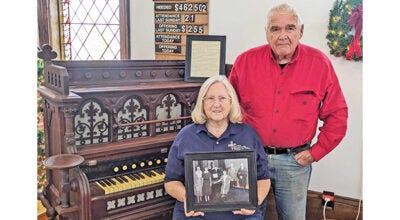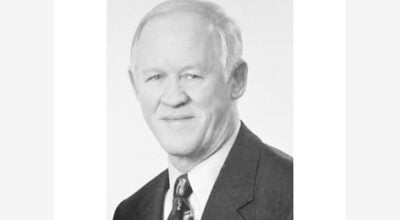Kathee Kiesselbach: Macro paintings utilize inspiring colors
Published 8:36 am Friday, May 31, 2013
When I first saw images of Jackie Welsh’s work, I was taken by the fact they looked so familiar. I realized, at one point, they looked very much like photos I had taken of giant succulent plants in Costa Rica. Her lovely interpretation of succulents with their different shades of blue and green blending into each other flawlessly was just beautiful. Deep alizarin crimson outlines of leaves create a sharp contrast in color and feel.
After years of painting landscapes and inspired by photographs she took on a trip to Asheville, N.C. where she toured the Biltmore House, Welsh decided to try painting patterns from nature. In the steamy greenhouse at the Biltmore, she came upon gorgeous plants, including orchids and succulents that she photographed, intending to use them as abstract natural patterns. But what has occurred is gorgeous, large macro paintings with restful, pensive grays, blues and greens.
“I’m using colors I’ve never used, layering, scraping, repainting …. I am being conscious of shapes and edges, of near and far, small and large, dark and light,” Welsh told me of her recent work.
Having retired after many years of working in South Bend art museums, Welsh reflected on it and told me, “I’ve spent large portions of my adult life looking at art, thinking about art and, as often as I can, making art.”
When Welsh was working, she worried more about having a chance to paint, not about what she would paint or why.
“As I think my way through what it is I want to paint and what it is I want to say, I have listened to trusted advisors — including recent teachers like Notre Dame’s Maria Tomasula, and Diane Tessler from Kewanna Indiana — who tell me to just keep painting. I’m on a journey.”
Welsh’s earlier work made me a little hungry, I must admit. Welsh took hundreds of photos on a trip to Paris a couple years ago, realizing afterward that the majority of photographs were of cakes.
“Large cakes, small cakes, cupcakes, fruit topped tart-like cakes. So for the next year, I painted cakes. A birthday cake with glowing candles, was followed by paintings of empty rooms with a lone, frosted layer cake placed somewhere in the room. I copied cakes painted by California contemporary confection artist Wayne Thiebaud, using his bright, saturated pinks and greens, sometimes laying the paint down with a spatula, like icing a cake.”
Welsh has been making art for more than 50 years.
“I don’t remember having any art classes in grade school but I remember being asked to paint scenery for the seventh-grade play and getting to skip class to do it. I remember charging 5 cents to “draw the legs” on paper dolls created by girls in my neighborhood. (I was the only one who could draw legs).”
Thinking she wanted to teach, Welsh graduated from Winthrop College in South Carolina with a bachelor’s degree in psychology.
“At that time, it was a girls’ college, highly regarded for training teachers. I took every studio art class offered but at some point, probably because it was the ’60s, I decided I should save the world instead. I married and worked for the next 10 years as a hospital social worker,” Welsh recalls.
While living in New York, Welsh took her first life drawing and printmaking classes at Syracuse University. She painted en plein air for the first time after moving to Maryland, taught by internationally known landscape painter, Eugene Leake, former head of the Maryland Institute of Art. When Welsh relocated to South Bend when her husband took a job at Notre Dame, she left behind painting friends.
“I thought I’d never recover from the loss of that group of supportive women,” said Welsh, who went on to take painting classes at Notre Dame taught by Doug Kinsey and Don Vogl.
When she began working full time as curator of Education Public Programs, there was no time for a weekly class, so she took occasional painting and printmaking workshops.
Now retired, in addition to painting, Welsh shows her work and volunteers on the boards of local art organizations. Asked if she sees herself now as an artist, Welsh responded, “I don’t know when a person ‘becomes’ an artist. It takes a long time and a leap of faith to describe one’s self as an artist. It takes confidence. However, I can’t imagine my life without visual art being part of it.”





